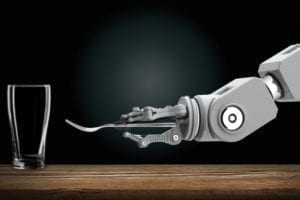MIT researchers have designed a system that enables interactive robots to learn complicated tasks that would otherwise stymie them with too many confusing rules.
The researchers’ Planning with Uncertain Specifications (PUnS) system gives robots humanlike planning ability to simultaneously weigh many ambiguous — and potentially contradictory — requirements to reach an end goal.
In doing so, the system always chooses the most likely action to take, based on a ‘belief’ about some probable specifications for the task it is supposed to perform.
In their work, the researchers compiled a dataset with information about how eight objects — a mug, glass, spoon, fork, knife, dinner plate, small plate, and bowl — could be placed on a table in various configurations.
A robotic arm first observed randomly selected human demonstrations of setting the table with the objects.
Then, the researchers tasked the arm with automatically setting a table in a specific configuration, in real-world experiments and in simulation, based on what it had seen.
To succeed, the robot had to weigh many possible placement orderings, even when items were purposely removed, stacked, or hidden.
According to the researchers, these would normally confuse robots too much. However, in real-world demonstrations, the robot showed behaviour similar to how a human would perform the task.

For example, if an item wasn’t initially visible, the robot would finish setting the rest of the table without the item. Then, when the fork was revealed, it would set the fork in the proper place.
In simulation, the robots reportedly only made six mistakes out of some 20,000 simulated test runs.
“The vision is to put programming in the hands of domain experts, who can programme robots through intuitive ways, rather than describing orders to an engineer to add to their code,” said Ankit Shah, a graduate student in the Department of Aeronautics and Astronautics (AeroAstro) and the Interactive Robotics Group.
“That way, robots won’t have to perform preprogrammed tasks anymore.
“Factory workers can teach a robot to do multiple complex assembly tasks.
“Domestic robots can learn how to stack cabinets, load the dishwasher, or set the table from people at home.”
Next, the researchers hope to modify the system to help robots change their behaviour based on verbal instructions, corrections, or a user’s assessment of the robot’s performance.








